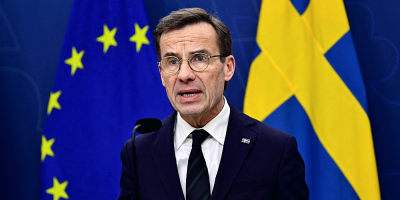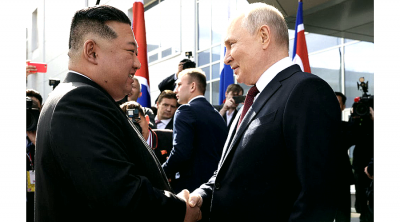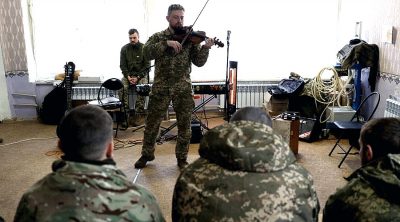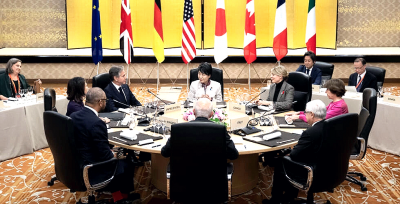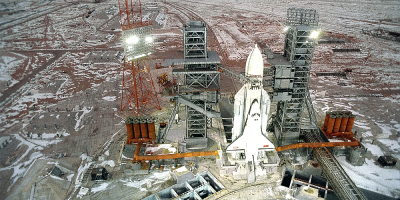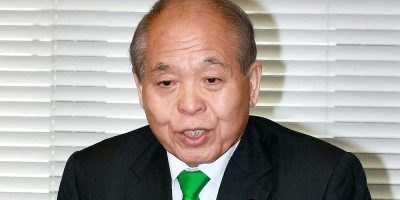Contrary to most predictions, the Russian invasion of Ukraine that started on February 24, 2022 is now expected to become a long-term affair.
I would like to give thought to a few points, not from a normative perspective about how things ought to be or what ought to be done, but from an observer’s perspective about why the conflict evolved in this way and what will happen next.
First, the reason why Russian expectations of a short, decisive campaign did not pan out is not simply the often-highlighted high morale of Ukrainian soldiers and the military aid from the West, but also that Russia’s strategy for all-out invasion lacked military rationality.
Even before the start of the war, it was said that Russia did not have enough soldiers to control all of Ukraine. This was used to support the claim there would be no all-out invasion, although something might still happen in the Donbas.
In reality, we did get an all-out invasion, but the troops were spread far too thin and the short, decisive battle strategy failed.
The question is why this decision was taken despite lacking military rationality.
To date, Russia has announced the following objectives for the war:
- Preventing Ukraine from joining NATO
- Denazification of Ukraine
- Demilitarization of Ukraine
- Protecting the Donetsk People’s Republic and Luhansk People’s Republic in Donbas
- Protecting Russian residents in Ukraine, and
- Toppling the Volodymyr Zelenskiy administration.
The relative emphasis on these has changed on occasion, but they are also internally contradictory.
If the emphasis were placed on protecting the two republics and troops were dispatched only to Donbas, then this would predictably tilt Ukrainian society further right and motivate a NATO membership, thereby preventing the realization of objectives 1 and 2.

Launching an all-out invasion and installing a puppet regime would likely have resolved this contradiction.
Having said that, examined rationally, this is a plan that is difficult to realize through military means. That this suggestion was adopted is likely because the policy decision-making process in Russia was left up to a few individuals.
Reports suggest that the decision to go to war in Ukraine was taken by four persons: Russian President Vladimir Putin, Secretary of the Security Council of Russia Nikolai Patrushev, Defense Minister Sergei Shoigu, and Chief of the General Staff Army General Valery Gerasimov.
Not only were the prime minister and others with economic responsibilities excluded from the decision-making process, the proposal for an all-out invasion is also thought to have not sufficiently reflected the opinions of military experts.
In fact, we heard of opposition from former officers before the war started.
This leads us to believe that Putin and Patrushev were the key policy-makers, with their decision being passed on to the military men Shoigu and Gerasimov.
In general, decision-making in the hands of a few individuals makes the process itself very swift, but it also tends to cause problems during execution.
This war also started out as a difficult all-out invasion and ran into problems during its prosecution.
What are the prospects going forward? At present, it seems that the Russians have given up on the all-out invasion and are shifting focus to occupying Donbas and southern Ukraine.
Looking from the east, they are unlikely to give up on protecting the two republics even if they do abandon their plans to install a puppet government.
In this scenario, the extent of the republics likely will not be the February 24 borders but the entire provinces of Donetsk Oblast and Luhansk Oblast.
Even so, it is highly improbable that the Ukrainians will agree to cede the two republics.
Even if the Ukrainians were to strengthen their military offensive and return the borders to what they were on February 24, they will probably not engage in ceasefire negotiations immediately after that.
Ukrainian President Zelenskiy has repeatedly mentioned a ceasefire proposal with the February 24 borders, but some of his aides have talked about wanting to take back Donbas and Crimea as well.
Public opinion within Ukraine is likely to want a complete recovery if they are able to push the Russians back.
Moreover, the Russians also show no intention of giving up on occupying the southern provinces.
Kherson Oblast is important also for supplying Crimea with water. They will probably want territories to connect Crimea and Donbas.
Even more than the occupation of the eastern provinces, this Russian occupation of southern provinces is currently unacceptable to the Ukrainians.
As such, we are faced with the bleak prospect of neither side wanting to compromise, the war becoming a long-term affair, and the fighting continuing until either side has exhausted every available means.
(Ogushi Atsushi is Professor at the Faculty of Law at Keio University, Japan.)
ADVERTISEMENT
ADVERTISEMENT






